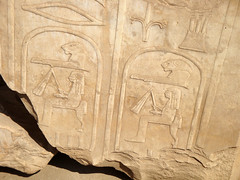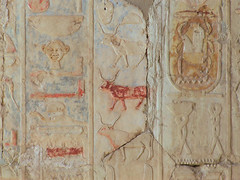
Building at Karnak seems to have been somewhat of a priority for Hatshepsut.
A large part of the responsibilities on the shoulders of a Pharaoh was religious- or so it seems to me. The monuments so far mentioned on the Hatshepsut Project are dedicated to deities; Amun Ra, Pakhet, Anubis and Hathor spring to mind. Hatshepsut was no different to most pharaohs of Ancient Egypt.
Building at Karnak Temple would have given Hatshepsut the opportunity to show she was no different to her father. By this i mean "my father erected obelisks here and so shall I".
Not only her father, but previous Pharaohs in general. Also living at Karnak are the hugely powerful and influential priests (and priestesses?) of Amun, Mut and Khonsu. Surely pleasing them by building in the names of their gods would show Hatshepsut's loyalty(?)
The 8th Pylon at Karnak is one more of the building achievements of Hatshepsut still visible in Situ today. Digital Karnak is a very reliable source of information. They are also the source of the photograph above.
Regards,
Stuart









